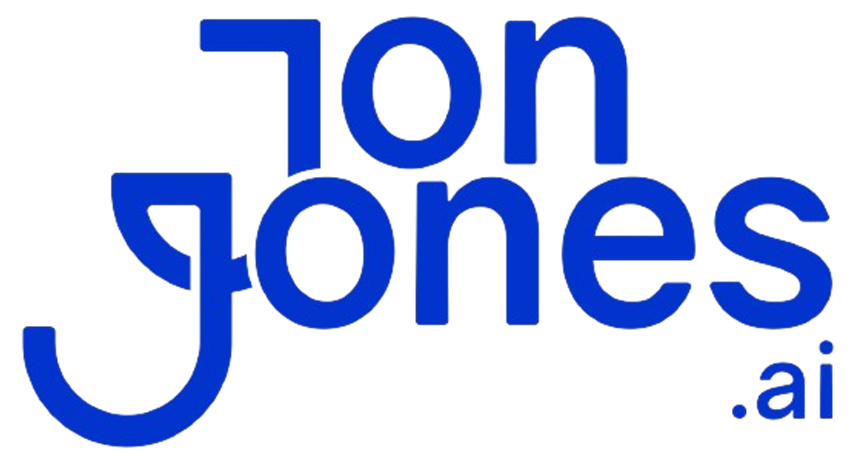Think dumping cash into random Facebook ads will skyrocket your sales? You’re not alone. Lots of small business owners try flashy tricks without a clear plan and end up burning through their budget with nothing to show.
But a simple, step-by-step strategy changes everything. Okay, let’s dive in.
We’ll walk you through four key moves:
- Define your ideal customer with a simple persona (a one-page profile of your perfect buyer).
- Craft messaging that speaks directly to their needs and pain points.
- Launch targeted Facebook ad campaigns built around that persona.
- Set up automated email sequences (step-by-step messages that send themselves).
Ready to turn your marketing noise into real results?
Digital Marketing Strategy Blueprint for Small Business

A clear plan keeps small teams on track. Seventy-five percent of small businesses with a structured marketing plan are 6.7x more likely to succeed.
Check out Strategic Planning for Small Businesses for the full story. In today’s 2025 world of AI-driven tools (tools powered by artificial intelligence), we’ll give you a step-by-step path for your online marketing.
-
Audience definition & personas
Define your ideal customer by age, role, main challenges, and buying habits. A focused persona (a sketch of your target customer) lifts engagement and cuts wasted ad spend. -
Value proposition & branding
Write a one-line promise that speaks to what your customer really needs. Keep your visuals and tone consistent from your website to your social posts. -
SEO & website setup
Build your site on a fast, mobile-friendly CMS (content management system). Then target high-intent, long-tail keywords to help people find you on search engines. -
Content & editorial calendar
Plan your blog posts, videos, and guides at least two months in advance. Match each topic to buyer questions and the right SEO terms. -
Social media channel selection
Choose one or two platforms where your audience hangs out, such as Instagram for visuals, LinkedIn for B2B, or Facebook for local buzz. Then lean into each channel’s best content style. -
Email automation workflows
Set up automated email sequences like welcome emails, cart-abandon reminders, and re-engagement messages. Clear calls to action help move prospects toward purchase. -
Paid advertising & budget allocation
Start with a small daily budget for pay-per-click (PPC) and social ads. Test different ads and shift your funds to the ones bringing in the best results.
Tie these steps together and you’ll turn scattered tactics into one clear small business marketing strategy. You’ll be able to track, tweak, and scale without hiring extra staff or blowing your budget.
SEO & Local SEO Tactics for Small Business

Search engine optimization (SEO) is how search engines and people find your business. It’s the backbone of your digital marketing strategy. Modern search algorithms look for expertise, authoritativeness, and trustworthiness (E-A-T) in content written for real readers, and for AI systems. Good SEO boosts your visibility, brings more clicks, and earns trust.
Here’s our playbook:
- Claim and optimize your Google Business Profile.
- Keep your Name, Address, and Phone (NAP) consistent across directories.
- Gather customer reviews and respond quickly, you’ll show you care.
- Publish pages targeting your local areas.
- Add local schema markup (a bit of code that helps search engines get your business details).
We’ll keep an eye on your progress, like a coach on the sidelines. Check your rankings and click-through rates in Google Search Console (a free tool that tracks how your site’s doing) or your analytics dashboard. Then we’ll tweak keywords, refresh content, and dial in your local SEO so you stay ahead.
Website Optimization & Mobile Marketing for Small Business

Over half of your visitors are on phones, so we need your site to flex and load fast, every tap counts. As part of your small business digital marketing, you’ll want a layout that adapts to any screen and stays speedy. Then we’ll personalize offers (like location-based deals) and keep navigation smooth. That’s how you nail mobile marketing for small businesses.
Responsive Web Design Guidelines
Set a viewport meta tag so your pages scale to any screen width.
Use flexible grids with percentages, not fixed pixels, for columns that stretch or shrink.
Make buttons and menus finger-friendly by spacing them at least 48px apart and using big, clear text.
Keep forms simple: one field per line makes tapping and typing a breeze.
Page Speed and Performance
Compress images with tools like TinyPNG or Squoosh to cut down file size.
Add lazy loading so off-screen pictures wait to load until they scroll into view.
Use a CDN (content delivery network) to serve files from servers nearest your audience. That can halve load times and boost your small business website’s performance.
Page speed matters.
Content Marketing & Blogging for Small Business

Content marketing and blogging can pack a serious punch (return on investment, or ROI) for small teams on a shoestring budget. When we aim for two to three posts a week that focus on high-intent long-tail keywords (specific search phrases that show clear buying intent), we start to build steady traffic and real credibility.
We kick off with formats that answer real questions and show you’re the expert. We use how-to guides, FAQs, case studies, and origin stories.
Plus, every blog post you publish can fuel social updates, email sequences, and even paid ads, no extra copy needed.
Here’s how we keep it organized:
- Create a content calendar template and topic clusters. Map themes over months so related posts live together. This helps you hit keyword clusters and keeps your team on the same page.
- Prioritize problem-solving, educational posts. Articles that teach people to fix their top challenges get bookmarked, shared, and build trust.
- Repurpose long articles into social snippets and email teasers. Slice a guide into tweet-sized tips or newsletter hooks so ideas travel farther without extra writing.
Consistency is the secret sauce for any digital marketing plan. We track how often we post, how long people stay on each page, and how many leads roll in. A simple spreadsheet or analytics dashboard makes reviews fast.
Every quarter, we audit to spot content gaps and realign topics with search trends and customer needs. Then we tweak the calendar to keep the momentum going.
Social Media Marketing for Small Business

Choosing the right channels keeps you from spreading yourself too thin. We focus on the apps where your audience already hangs out.
And with automation tools (software that batches and schedules posts), you’ll post faster, track comments, and flag messages that need a quick reply. You stay nimble on a tight budget.
Meta
- Best for polls, customer spotlights, event invites and short videos.
- Post 3–5 organic updates each week and run daily ad sets.
- Reply to comments and messages within a day, and boost your top posts.
- Go for crisp product shots, Reels and photo carousels.
- Share daily Stories, post on your grid three times a week and drop two Reels.
- Use stickers in Stories and send a quick DM thank-you when someone shares.
- Perfect for industry insights, case studies, thought leadership and polls.
- Publish three feed updates weekly and one long-form article each month.
- Comment on your connections’ posts, send personal notes and track prospects.
YouTube Shorts
- Create 15–60 second tutorials, demos and quick tips.
- Aim for three to four Shorts a week to win the algorithm’s favor.
- Include clear calls-to-action (CTAs), reply fast to comments and pin your best feedback.
Email Marketing & Automation for Small Business

Ever wondered if email marketing pays off? You’ll see $42 back for every $1 you spend (ROI: return on investment). That kind of return can be a game changer for a small business.
We use AI-powered segmentation (an algorithm that groups subscribers by their actions) and automated journeys (set-it-and-forget-it email paths). You’ll nurture leads with welcome series, recover lost sales with cart-abandonment emails, and re-engage idle contacts. Results matter. Nice.
Here’s our game plan:
- Build your email list with lead magnets
- Segment contacts (new leads vs. repeat customers)
- Automate sequences: welcome series, cart-abandon emails, re-engagement nudges
Pay-Per-Click Advertising & Paid Campaigns for Small Business

Pay-per-click (PPC) ads give you a fast lane to eager buyers. Nice. When we add AI-driven smart bidding (bidding algorithms that adjust bids based on user behavior) and laser-focused audience targeting, even a tiny budget can feed your funnel. And hey, with more people asking Siri or Alexa to find services “near me,” optimizing for voice search means your ad pops up right when they’re ready.
You don’t need a big spend to play. With just $10–$20 a day aimed at long-tail keywords (specific search phrases that show clear intent), you can snag qualified traffic without burning through your budget. Want to see AI-powered PPC in action? Check out Automated Lead Generation with AI.
Smart Bidding & Budget Allocation
We kick off by grouping ads around tight themes, each group has its own bid cap and goal. Then we choose a smart bidding strategy like target CPA (cost per acquisition) or maximize conversions so AI keeps your cost per lead as low as possible. Start small: $10 a day on one ad group to gather data, not drain your bank.
Next, we shift funds to the best performers, ads pulling the most clicks, impressions, or conversions. It’s like watering the fastest-growing plants in your digital garden.
Ad Creatives & A/B Testing
We’re big fans of testing. Run two or more headlines, descriptions, and display URLs side by side to see what grabs attention. Then match your winning ad copy to your landing page, same offer, same promise, to keep quality scores high.
Track your click-through rate, conversion rate, and cost per conversion on your dashboard. Swap images, tweak calls-to-action, and watch performance stats climb. Over time, you’ll land on the ad combo that delivers peak ROI for your small business.
Data-Driven Metrics & ROI Measurement for Small Business

Ever feel swamped by marketing numbers? For small businesses, data is the life jacket that keeps your strategy afloat. When we pull reports from Google Analytics (Google’s web traffic tracker) and AI-powered analytics platforms that use machine learning (software that learns patterns), we see which channels drive visits, where people drop off, and how long they stay.
And setting up tracking the right way, while following Europe’s GDPR (data privacy law) and California’s CCPA (consumer privacy rule), keeps you out of legal trouble and on top of performance.
Here are the key metrics we watch for small-business success:
- Traffic by channel shows visits from organic search, paid ads, social media, and email.
- Cost per lead (total ad spend ÷ number of leads) tells you how much each lead costs.
- Conversion rate is the percentage of visitors who take your desired action, like buying or signing up.
- Email open rate tracks how many people open your messages, perfect for testing subject lines.
- Social engagement counts likes, shares, comments, and clicks across platforms.
- ROI (return on investment, revenue ÷ marketing spend) shows if you’re truly profitable.
Got it.
Grab a simple digital marketing plan template, think of it as a blueprint for your dashboard. We plug in each metric, then set a monthly check-in: you scan key numbers, spot dips or spikes, and tweak budgets or content. Week by week, you’ll watch your strategy get smarter.
Budget-Friendly Tools & Templates for Small Business Marketing

When you’re mapping out your small business marketing plan, you want tools with free tiers, quick setup, and easy integration. These picks hit the mark, letting you focus on growth instead of onboarding. Nice.
They cover design, website management, social scheduling, and analytics without steep learning curves. That means your team can start using them today.
- Canva: drag-and-drop design platform with ready-made templates for social posts and print graphics.
- Wix: website builder with mobile-friendly layouts and built-in SEO (search engine optimization) tips.
- HubSpot CRM & Marketing Hub: CRM (customer relationship management) and email automation in one spot, track leads and run campaigns.
- Later: visual scheduler for Instagram, Facebook, Pinterest, and Twitter posts.
- Google Analytics: real-time tracking tool for website visitors, traffic sources, and goals.
- Google Search Console: free alerts on indexing issues and insights into what people search to find you.
Grab our free content calendar template to plan posts, assign topics, and stay on top of deadlines.
Final Words
in the action of creating your digital marketing plan, we walked through a step-by-step blueprint covering audience personas, branding, SEO, site setup, content calendars, social channels, email workflows, and pay-per-click.
We explored local SEO best practices, responsive design, content engines, social posting tips, automated email flows, smart ad bidding, key metrics, and budget-friendly tools.
Now you have a clear path to run your own digital marketing strategy for small business with confidence and excitement. Your growth story starts here.
FAQ
What is a good digital marketing strategy for small business?
A digital marketing strategy for small business combines clear goals, defined audiences, SEO-focused website, regular content, targeted social media, email campaigns, and paid ads to boost visibility and leads.
How does digital marketing help grow your business?
Digital marketing helps grow your business by increasing online visibility, attracting targeted traffic, nurturing leads with email, and converting sales through tailored content and ads.
How can I market my small business on social media?
You can market your small business on social media by choosing platforms your customers use, posting engaging content regularly, interacting in comments, and leveraging paid ads for wider reach.
How do I start a digital marketing business from home?
To start a digital marketing business from home, define your niche, set up a portfolio website, learn core skills (SEO, social, PPC), price your services, and network to land clients.
Where can I find a marketing strategies PDF for small business?
You can find a free marketing strategies PDF for small business on platforms like HubSpot, SCORE, and the U.S. Small Business Administration websites.
What should I expect from a digital marketing course?
A digital marketing course covers SEO fundamentals, social media tactics, email marketing, PPC basics, analytics tools, and real-world case studies to build practical skills.
What are the 7 C’s of digital marketing?
The 7 C’s of digital marketing are Company, Customers, Content, Channels, Community, Context, and Conversion, guiding cohesive strategy and engagement across platforms.
What are the 4 digital marketing strategies?
The 4 digital marketing strategies include content marketing, search engine marketing (SEM), social media marketing, and email marketing to engage and convert audiences.
What are the 5 P’s of digital marketing?
The 5 P’s of digital marketing are Product, Price, Place, Promotion, and People, which frame your online value proposition and outreach methods.
What is SEO?
SEO (search engine optimization) improves your website’s visibility on search engines by optimizing content, structure, and links to drive organic traffic.
What is social media marketing?
Social media marketing uses platforms like Facebook, Instagram, and LinkedIn to share content, engage audiences, and run ads that boost brand awareness and sales.
What is web development?
Web development is the technical process of building and maintaining websites, including coding, server management, and integrating databases for functionality.
What is web design?
Web design focuses on a website’s look and user experience, using layout, color, typography, and navigation to make sites attractive and easy to use.




